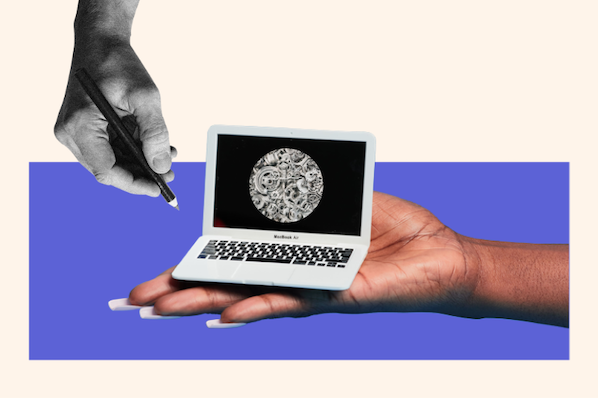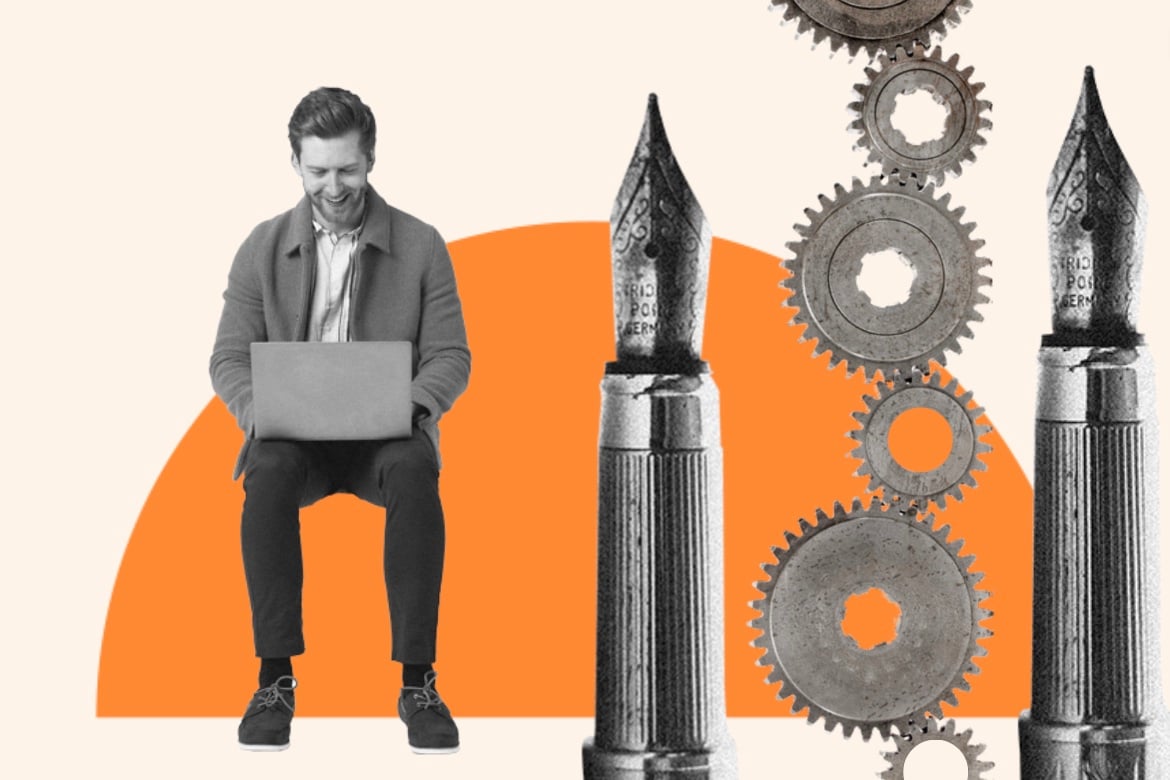I did the unthinkable. I gave ChatGPT access to my innermost thoughts, giving it all the ammunition to clone me and/or use emotional warfare to take me out in the AI apocalypse — but believe it or not, that wasn't my only endgame.
Click Here to Subscribe to HubSpot's AI Newsletter
Wild as this sounds, I didn‘t have a series of heart-to-hearts with ChatGPT just to doom my future self. I also asked it to help me optimize my life for sustainable happiness, hoping I’d get a little positive, non-dystopian mileage out of it in the process.
My experiment produced some interesting results — so if you want to see how the whole “using ChatGPT as my confidant, therapist, and spiritual guide” thing went, keep reading!
How It All Started
Health and wellbeing.
That was the goal for 2024 in every aspect of my life — financial, physical, and mental. I wanted to explore more grounded goals, rooted in reality … and when I say “reality” I mean real reality, not the AI reality that seemed to be taking over my work and life.
One day, I came across a post from an old colleague from undergrad at The University of Tennessee, Dr. DeAvila Ford — one of the few human-centered updates that popped up on my feed — and I was immediately moved.
She'd been using an app called How We Feel to help her clients process their real life experiences and achieve their goals.
Her testimony stopped me in my tracks.
At that moment, I realized what I had been looking for wasn't health and wellbeing inspiration, it was permission to understand my own human experience.
The Role of Professional Mental Health Services
Therapy, life coaching, higher-self retreats — they all serve a purpose in helping us define our reality and how we fit into it.
Those experiences are qualitative snapshots in time, the outcomes of which are difficult to synthesize over long periods of time.
Dr. Ford validated this challenge, too, saying, “Therapists have to rely on self-report from clients concerning symptoms and that may be difficult to remember in session.”
Sometimes, we get lucky and remember those moments and they mark major life changes. But for me, they faded into vague memories that I credited less and less as time passed.
It's scientifically proven that the human brain has capacity limits when visualizing large sets of data. Add bias to negative or positive events on top of that biological limitation, and you find that your recollection of your own emotions is a little compromised.
My mental health journey made me more introspective than I was before — a net gain for self-awareness, a net loss for self actualization.
Technology Harnesses The Human Experience
"How We Feel could change that," I thought as I downloaded the app.
I used it nearly every day, multiple times a day. The process went something like this:
- Trigger event happens.
- Feelings bubble up.
- I open the app and identify the intensity of my feeling.
- Define it.
- And, finally, log it, alongside what I'm doing.
The app did the rest — taking a snapshot in time of a very real moment and memorializing it. After three months, I had a ton of data about myself untainted by recency bias or poor numerical cognition — another point for self-awareness.
But my curiosity grew. The app gave me more insights than I knew what to do with.
How We Feel (HWF) solved for my brain's limited ability to process this large set of data by organizing my feelings into buckets based on who I was with, what I was doing, where I was, and even the weather.
Looking at the data, I thought to myself, “Jackpot! If I just spend Thursdays outside when the temperature is above 70 degrees and eat dinner with my best friend, I should be the happiest person every week right?"
It's possible, but is it sustainable? What about the other days of the week? Or the factors outside of my control?
I had more questions. And I had the data to answer them, but this pesky human brain limitation stopped me again.
What if there was some computer that could process all of this data much faster than I could and tell me exactly what to do everyday to optimize for a sustainable level of happiness and maybe even hold me accountable?
In comes ChatGPT.
What ChatGPT Helped Me Learn About My Happiness
After exporting all of my digitized emotional baggage and making it presentable, I fired up ChatGPT and fed the entire block of feels into the chat box with the following prompt:
“ChatGPT, please find themes within this data about my emotions over the past few months.”
With a bit more prompting and targeted questions, it shared some big themes that even the HWF app itself didn't provide.
"Overall, based on the data provided, it appears that you may feel the best on Sundays, Wednesdays, and Mondays, with these days being linked to positive emotions such as enthusiasm, relief, happiness, productivity, and gratitude.
While there are mentions of various emotions on different weekdays, Sundays, Wednesdays, and Mondays stand out as days when you tend to experience more positive moods.
It appears that Thursdays are a day when you may feel the worst, as negative emotions like feeling down, worried, embarrassed, and fatigued are reported on this day."
It went on to tell me about the time of day I felt specific emotions, who I spent my happiest moments with, and activities that correspond to my best and worst moods each week.
These insights were eye opening because HWF doesn't visualize specific emotion patterns across the other variables, it uses a high-level color-coding pattern to organize the data. What I was looking for was much more granular.
ChatGPT Optimizes My Life for Sustainable Happiness
Chat GPT completed the task with ease, calling out activities that I tend to enjoy, recommendations for who to spend time with, and what time of day to do it all.
Sample Daily Schedule for Optimizing Positive Emotions:
- Morning Routine (6:00 AM - 8:00 AM):
- 6:00 AM - Wake up and practice mindfulness or light stretching for a calming start to the day.
- 6:30 AM - Enjoy a nutritious breakfast at home to fuel your morning.
- 7:00 AM - Take a walk or engage in light exercise outdoors to boost energy levels.
- Mid-Morning (8:00 AM - 12:00 PM):
- 8:30 AM - Productive work tasks or engage in creative activities that inspire focus and determination.
- 10:00 AM - Short break for a healthy snack and some fresh air to rejuvenate.
- 11:00 AM - Write a positive note or journal entry to reflect on gratitude or set intentions for the day.
- Lunch Break and Afternoon (12:00 PM - 4:00 PM):
- 12:30 PM - Have a well-balanced and satisfying lunch to nourish your body and mind.
- 1:30 PM - Engage in self-care activities like reading, listening to music, or practicing relaxation techniques.
- 3:00 PM - Connect with family, roommates, or friends for a brief social interaction to foster positive relationships.
- Late Afternoon and Evening (4:00 PM - 8:00 PM):
- 4:30 PM - Plan outdoor activities like a walk in nature or a visit to your favorite coffee shop (MOTW) for a change of scenery.
- 6:00 PM - Engage in a hobby or creative activity that brings joy and excitement.
- 7:00 PM - Wind down the day with a calming routine like yoga, meditation, or light reading to relax.
- Nighttime Routine (8:00 PM - 10:00 PM):
- 8:30 PM - Enjoy a light, healthy dinner to settle into the evening.
- 9:00 PM - Practice gratitude journaling or write down positive affirmations for a peaceful mindset.
- 9:30 PM - Prepare for bed with a soothing bedtime routine to ensure restful sleep.
Will I actually use this optimized schedule? Maybe. It's quite different from what I do now, so it could help me find a more sustainable level of happiness.
However, I found a therapist first. We've been using this app together to connect the dots about the insights this technology has uncovered.
AI has been helpful in finding patterns in my emotions and matching them to the context of my life. It also reminds me to be human during the days when I'm on autopilot the most.
Should AI and Mental Health Meet?
This happiness optimization plan is a solution for the in-between-time of traditional mental health solutions, especially for folks in between jobs, seeking mental health care, or without health insurance, but it's not a catch all.
“The 'How We Feel' app created an innovative way for clients to see their feelings, what is triggering them, and observe patterns. It also allows the therapist to look through the patterns and implement evidence-based interventions (EBI) for the specific triggers,” says Dr. Ford.
But technology should further the human experience.
“I feel clinicians are approaching the integration with caution…The goal is not to eliminate the connection piece,” she adds.
I found that How We Feel helped me accurately define my emotions over time in the context of my day-to-day life.
ChatGPT found patterns in that data and create a plan for me to work with, rather than against, myself by making drastic changes that don't align with where I actually am mentally.
And therapists like Dr. Ford or a trusted community partner, can help us connect those technological dots to our reality for a sustainable level of happiness.
“The pandemic highlighted our need to meet clients where they are,” Dr. Ford continues. “Therapy doesn't have to take place in a traditional office space anymore. It can occur in your car during lunch or in a corner of your home.
She adds that the wellness space has to grow with technology so that therapists can help their clients, while still prioritizing human connection.
Much of the work done to improve how we see ourselves and the world is done in community, through therapy, quality time with loved ones, or within religious gathering spaces.
But technology, like How We Feel and generative AI, can offer a good starting point and make the experience manageable.



![Is it Real or AI? Test Your Detection Skills [Round 4]](https://www.hubspot.com/hubfs/real%20or%20ai%204.png)



![Which AI Tool Writes the Best Marketing Copy? [I Tested Several Different Tools]](https://www.hubspot.com/hubfs/Untitled%20design%20%2842%29-1.jpg)



![Real or AI-Generated? You Guess [Quiz]](https://www.hubspot.com/hubfs/real%20or%20ai.png)